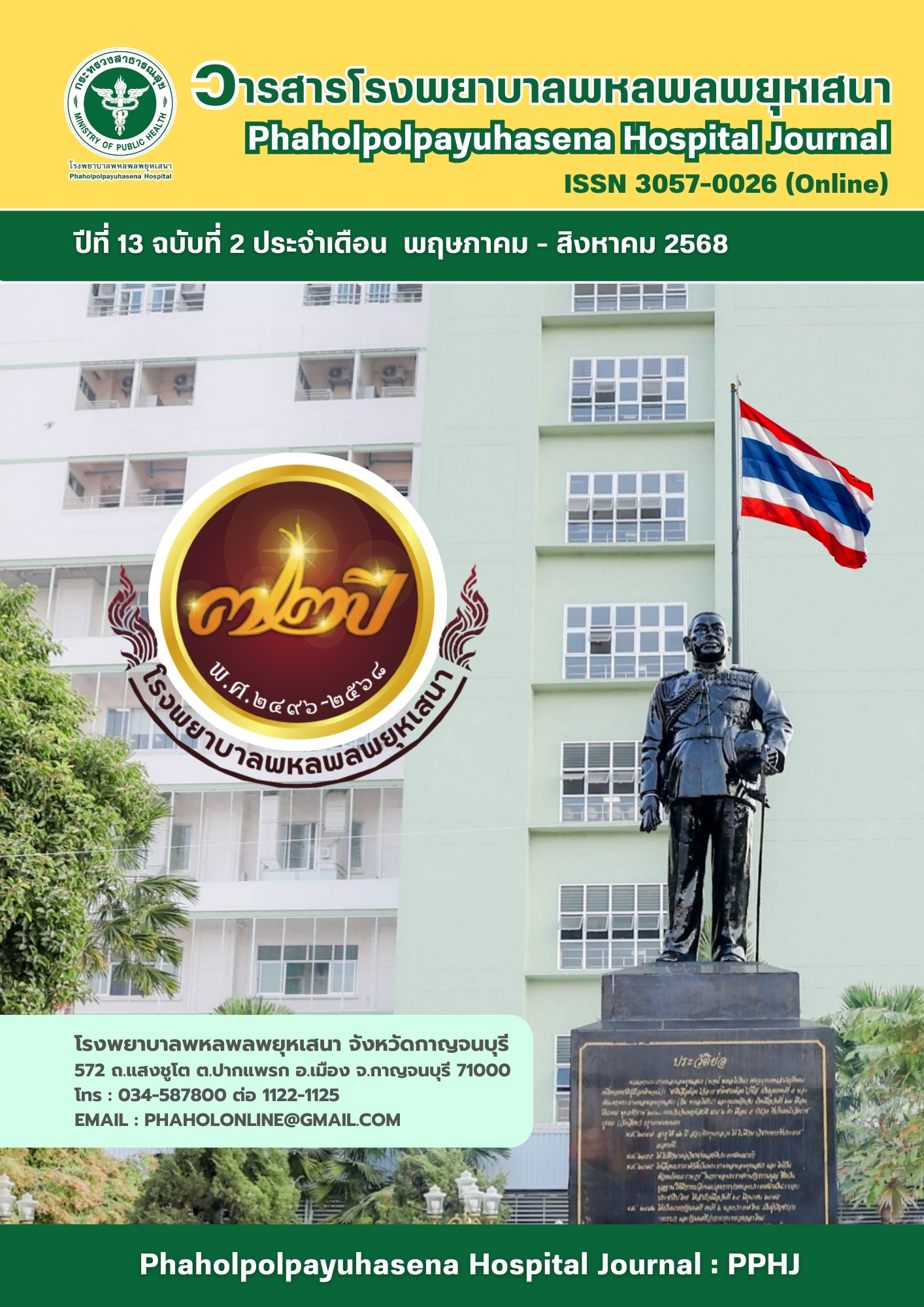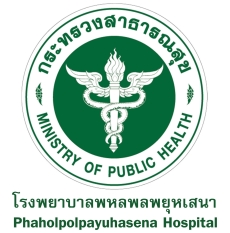Development of a Paperless System For Inpatient Medication Ordering at Thakradan Hospital
Keywords:
medication errors, physical therapy, medication ordering system, paperlessAbstract
Objectives: To evaluate the impact of implementing a paperless ordering system on the incidence of medication errors in the inpatient department of Thakradan Hospital.
Methods: This quasi-experimental, before-and-after study compared medication error data obtained from the hospital’s risk management information system before and after the implementation of a paperless ordering system. Data were collected during January–March 2024 (copy order system) and the same period in 2025 (paperless system). The intervention involved the use of an electronic medication prescribing and inpatient data management system (NEO IPD paperless). Descriptive statistics and the Z-test were used for data analysis.
Results: Following the implementation of the paperless ordering system, the overall medication error rate decreased from 21.61 to 20.35 incidents per 1,000 patient-days (p=0.773). Errors during the medication administration stage significantly decreased from 8.84 to 2.91 incidents per 1,000 patient-days (p=0.080). A reduction in Category C errors was observed, and no Category E (serious) errors were reported. Additionally, the system provided enhanced alert mechanisms for error prevention. However, the rate of errors during the prescribing stage significantly increased from 2.95 to 10.66 incidents per 1,000 patient-days (p=0.034), most of which were classified as Category B errors.
Conclusions: The paperless ordering system demonstrated a potential to reduce the overall medication error rate, particularly during the administration phase, and to decrease the severity of medication errors. Nevertheless, the statistically significant increase in prescribing-phase errors highlights the need for system improvements and comprehensive training for healthcare personnel to ensure accurate and efficient system usage.
References
Van Doormaal JE, Van den Bemt PM, Mol PG,Zaal RJ, Egberts AC, Haaijer-Ruskamp FM, Kosterink JG. Medication errors: the impact of prescribing and transcribing errors on preventable harm in hospitalised patients. BMJ Qual Saf. 2009;18(1):22–7.
กรองหทัย มะยะเฉี่ยว, โพยม วงศ์ภูวรักษ์. ความคลาดเคลื่อนทางยาในโรงพยาบาลชุมชนแห่งหนึ่งในจังหวัดนครราชสีมา. วารสารเภสัชกรรมปฏิบัติ. 2561;10(1):142–55.
กระทรวงสาธารณสุข. คู่มือการประเมินโรงพยาบาลอัจฉริยะ. พิมพ์ครั้งที่ 1. นนทบุรี: สำนักสุขภาพดิจิทัล สำนักงานปลัดกระทรวงสาธารณสุข; 2566.
ปรียาภรณ์ สุขงาม. การสั่งยาทางอิเล็กทรอนิกส์ให้สอดคล้องกับมาตรฐาน Clinical Decision Support.วารสารวิชาการ ปขมท. 2564;10(2):180–8.
อภิลักษณ์ นวลศรี. ความคลาดเคลื่อนทางยากับการใช้ระบบสั่งยาทางคอมพิวเตอร์จากหอผู้ป่วย. สงขลานครินทร์เวชสาร. 2549;24(1):1–8.
สุมิตรา สงครามศรี, มาลินี เหล่าไพบูลย์. การยาสั่งด้วยระบบคอมพิวเตอร์ในการลดความคลาดเคลื่อน ในการสั่งใช้ยาโรงพยาบาลหนองหาน จังหวัดอุดรธานี: Interrupted Time Series Design. วารสารเภสัชศาสตร์อีสาน. 2560;13(2):53–66.
สมปรารถนา ภักติยานุวรรตน์. การเปรียบเทียบการเกิดความคลาดเคลื่อนทางยา ระหว่างระบบสั่งจ่ายยาแบบใหม่ กับระบบสั่งจ่ายยาแบบเดิม ในผู้ป่วยนอก โรงพยาบาลชัยภูมิ. เชียงรายเวชสาร. 2563;12(3):99–113.
วิทยา ไชยจันพรม, ทศพร ทองย้อย, มลินา ปฐมเจริญสุขชัย. การใช้ระบบ Paperless ของโรงพยาบาลสมเด็จพระยุพราชท่าบ่อ. วารสารการแพทย์โรงพยาบาลอุดรธานี. 2567;32(1):48–57.
Brenner SK, Kaushal R, Grinspan Z, et al. Effects of health information technology on patient outcomes: a systematic review. J Am Med Inform Assoc. 2016;23(5):1016–36.
Hartwig SC, Denger SD, Schneider PJ. Severity-indexed, incident report-based medication error-reporting program. Am J Hosp Pharm. 1991;48(12):2611–6.
Lindén-Lahti C, Kivivuori S-M, Lehtonen L, Schepel L. Implementing a new electronic health record system in a university hospital: the effect on reported medication errors. Healthcare (Basel). 2022;10(6):1020.
Downloads
Published
How to Cite
Issue
Section
License
Copyright (c) 2025 Phaholpolpayuhasena Hospital

This work is licensed under a Creative Commons Attribution-NonCommercial-NoDerivatives 4.0 International License.
บทความที่ได้รับการตีพิมพ์เป็นลิขสิทธิ์ของโรงพยาบาลพหลพลพยุหเสนา
ข้อความที่ปรากฏในบทความแต่ละเรื่องในวารสารวิชาการเล่มนี้เป็นความคิดเห็นส่วนตัวของผู้เขียนแต่ละท่านไม่เกี่ยวข้องกับโรงพยาบาลพหลพลพยุหเสนาและบุคลากรท่านอื่น ๆ ในโรงพยาบาลฯ แต่อย่างใด ความรับผิดชอบองค์ประกอบทั้งหมดของบทความแต่ละเรื่องเป็นของผู้เขียนแต่ละท่าน หากมีความผิดพลาดใด ๆ ผู้เขียนแต่ละท่านจะรับผิดชอบบทความของตนเอง



 Phaholpolpayuhasena Hospital
Phaholpolpayuhasena Hospital
